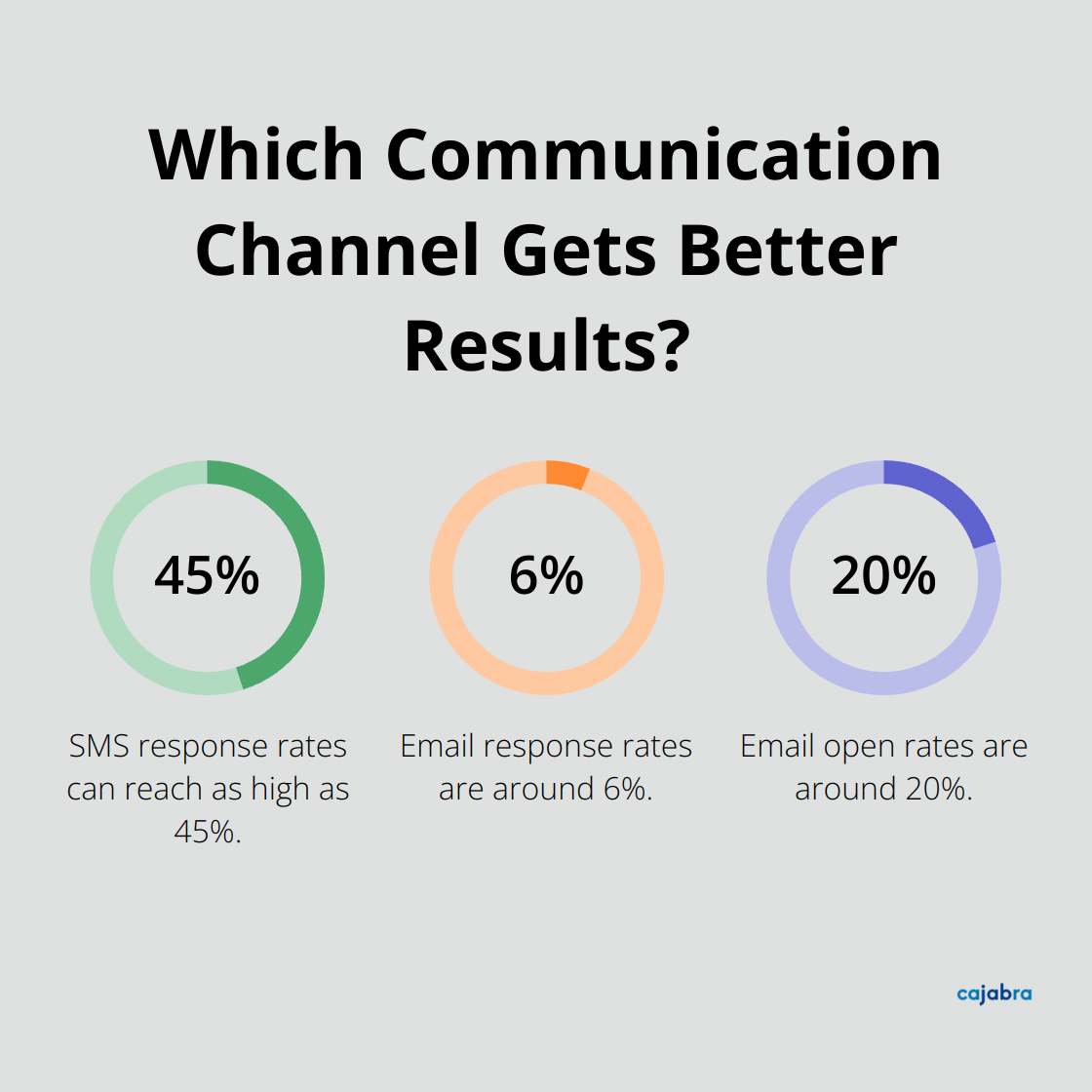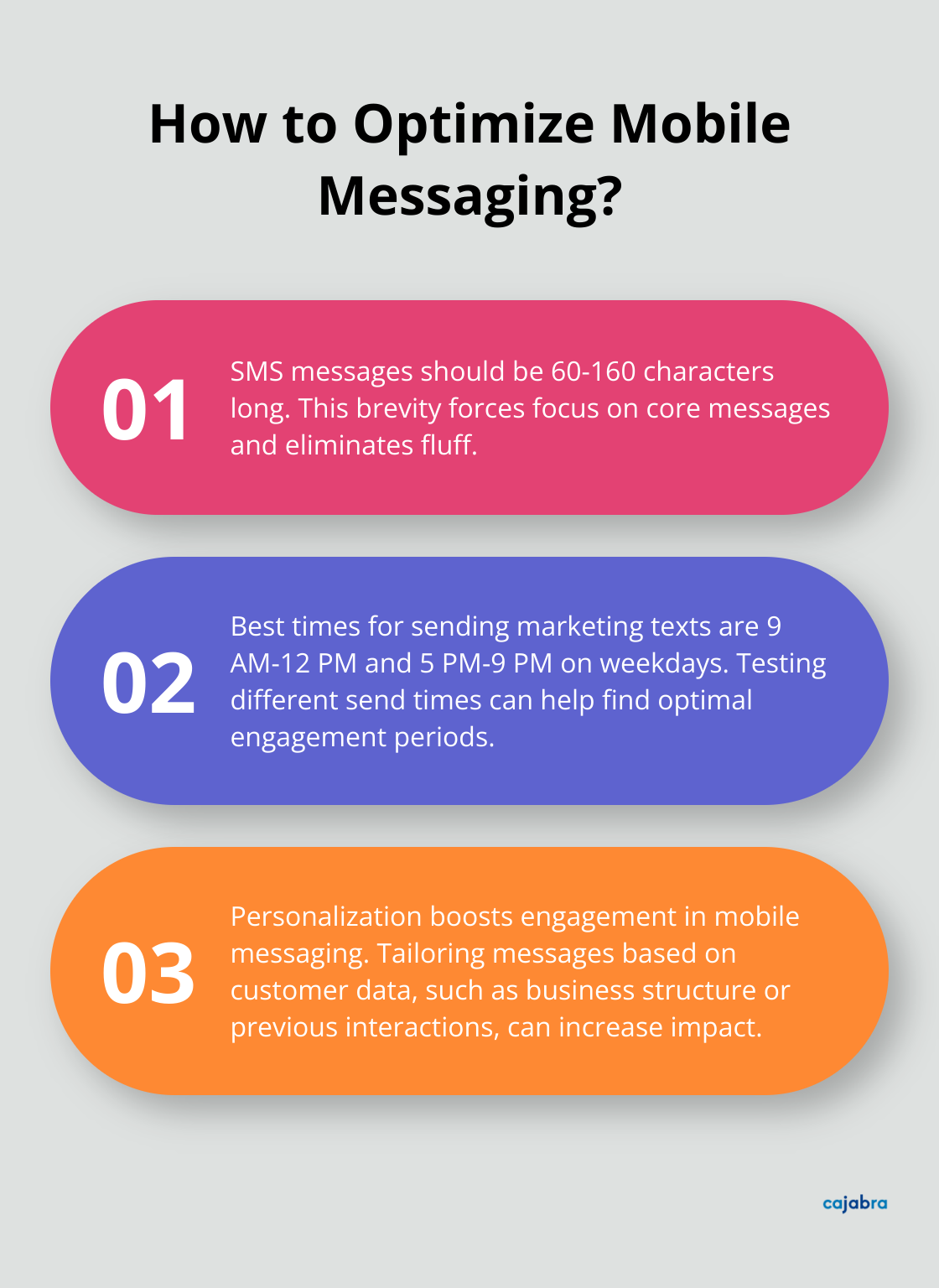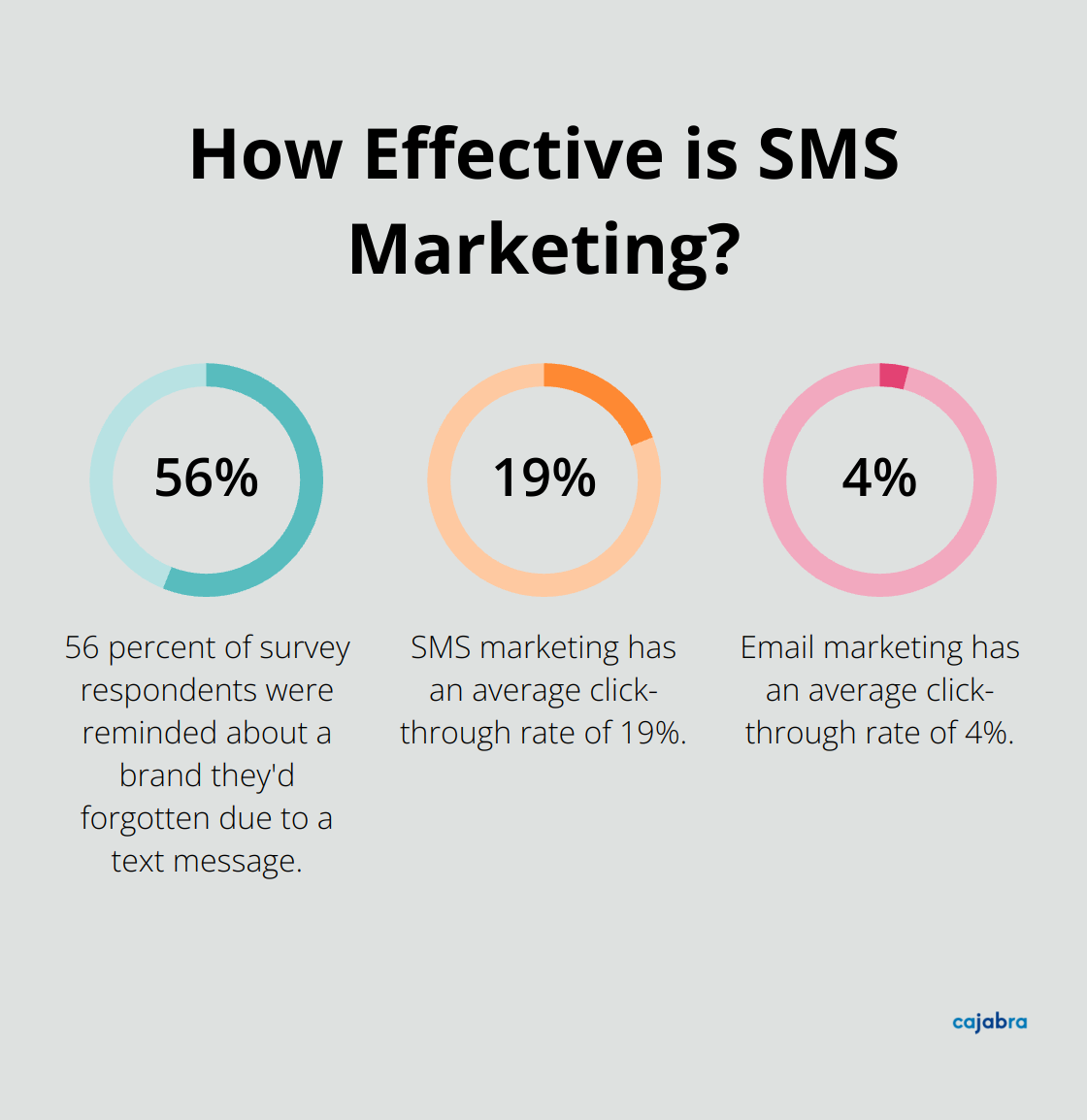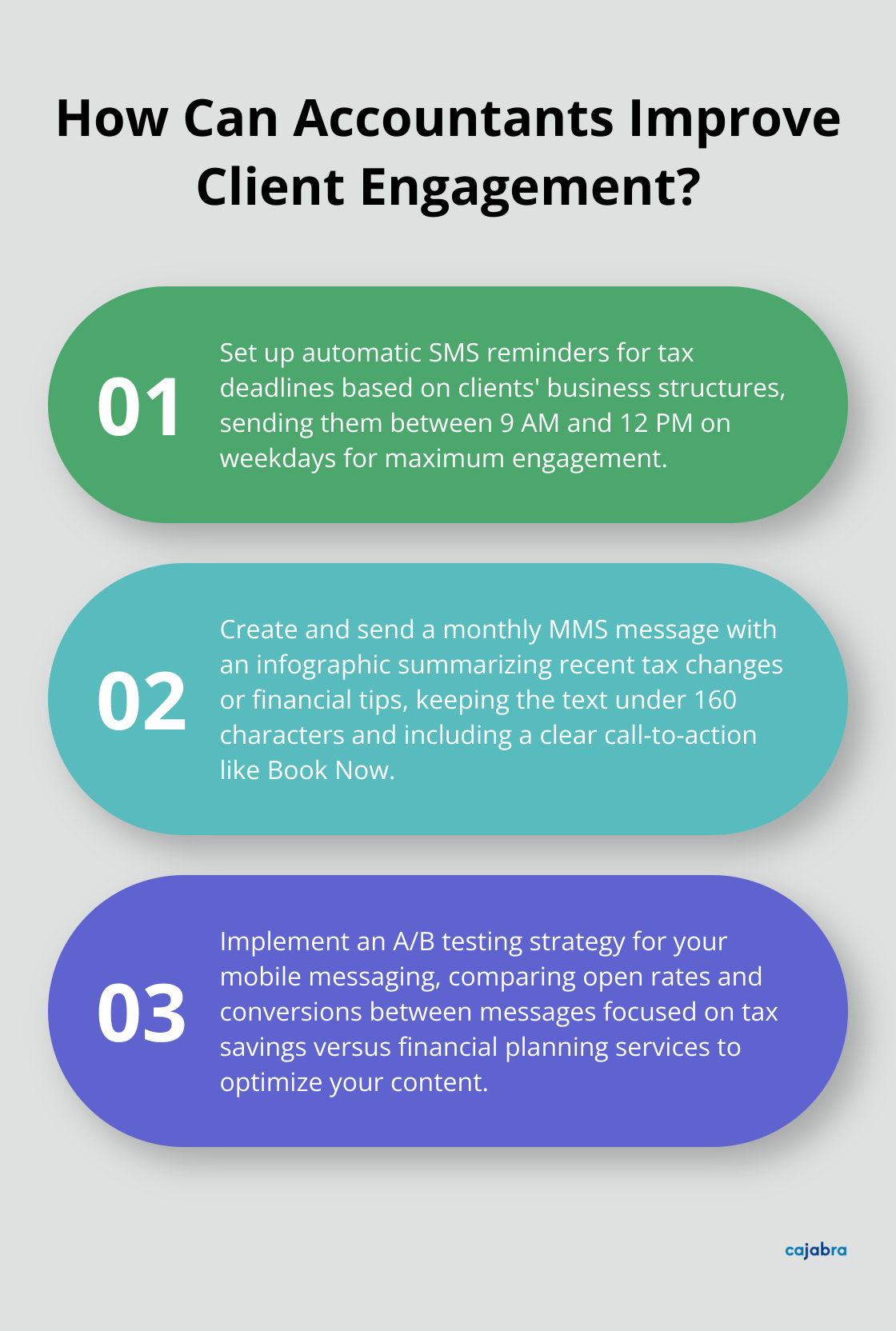
Mobile messaging has become a powerhouse in customer engagement. At Cajabra, LLC, we've seen firsthand how this direct, personal approach can transform businesses.
A well-crafted mobile messaging strategy is key to reaching customers on their most-used devices. In this post, we'll explore effective tactics and overcome common challenges to help you connect with your audience on the go.
Mobile messaging has revolutionized customer engagement. Recent data shows that text messages can yield an average open rate of up to 95%. This high engagement rate makes mobile messaging an indispensable tool for businesses across all sectors.
The shift towards mobile-first communication is undeniable. By the end of 2023, almost 70 percent of the world's population were smartphone users. This trend has transformed how businesses approach customer engagement, placing mobile messaging at the forefront of marketing strategies.
Mobile messaging enables immediate interaction with customers, creating opportunities for instant engagement. This immediacy proves particularly effective for time-sensitive offers or urgent communications. SMS open and response rates can reach as high as 98% and 45%, respectively, compared to email's 20% open rate and 6% response rate (Gartner).
One of the most significant advantages of mobile messaging is its ability to deliver personalized content to a large audience. Businesses can tailor messages to individual preferences, behaviors, and purchase history by leveraging customer data. This level of personalization significantly boosts engagement and conversion rates. In fact, 80% of consumers are more likely to make a purchase when brands offer personalized experiences (Epsilon).
Mobile messaging has the power to transform customer relationships across various industries. For example, accounting firms can strengthen their position as trusted advisors by delivering targeted, relevant content directly to clients' mobile devices. This approach can drive more retainer-based business and foster long-term client loyalty.

As we move forward, let's explore the effective strategies that can maximize the impact of your mobile messaging campaigns and help you connect with your audience on a deeper level.
Mobile messaging is a powerful tool, but its effectiveness depends on how well you craft your messages. Let's explore the strategies that can maximize the impact of your mobile messaging campaigns.
The key to successful mobile messaging is brevity. The ideal length for an SMS message ranges between 60 to 160 characters. This constraint forces you to focus on your core message, eliminate fluff, and get straight to the point. For example, instead of a lengthy explanation about a new service, try: "New tax planning service available. Book your consultation today!"
Timing plays a critical role in mobile messaging. The best times for businesses to send marketing text messages are generally between 9 AM and 12 PM, and then again from 5 PM to 9 PM on weekdays. However, these times can vary depending on your specific audience. Test different send times and analyze open rates to find what works best for your clients.
Personalization significantly boosts engagement. Use customer data to tailor your messages. For accounting firms, this could mean sending tax deadline reminders based on a client's business structure or offering personalized financial advice based on their previous interactions.
While text-only messages can be effective, incorporating multimedia can boost engagement. MMS messages have a slightly higher average revenue per recipient compared to SMS, although the rates for SMS and MMS are almost identical. Accounting firms could send infographics summarizing tax changes or short video explanations of complex financial concepts.
Every message should have a clear call-to-action (CTA). Whether it's "Book Now," "Learn More," or "Claim Your Offer," your CTA should be concise and compelling. Try to create a sense of urgency (e.g., "Limited spots available" or "Offer ends tonight") to encourage immediate action.

The art of crafting effective mobile messages lies in balancing brevity, timing, personalization, and compelling content. As we move forward, let's explore how to overcome common challenges in mobile messaging to ensure your campaigns reach their full potential.
Respecting customer privacy stands as a top priority in mobile messaging. You must obtain explicit consent before sending any messages. SMS is proving critical for keeping brands top of mind, with 56 percent of survey respondents being reminded about a brand they'd forgotten due to a text message. Implement a clear opt-in process and provide easy opt-out options in every message. This approach not only complies with regulations (like GDPR and CCPA) but also builds trust with your audience.

To personalize messages without breaching privacy, use data that customers have willingly shared. For example, you could send tax deadline reminders based on the type of business a client runs, without mentioning sensitive financial details.
Managing message volume prevents your communications from being perceived as spam. A study found that 62% of consumers would unsubscribe if they received too many messages. Try to prioritize quality over quantity. For accounting firms, this might mean sending monthly tax tips rather than weekly updates.
To further avoid the spam label, vary your message content. Mix informational messages with promotional ones. For instance, alternate between sharing tax-saving strategies and promoting your services. This approach provides value to clients while keeping them engaged with your brand.
With the variety of mobile devices in use, your messages must display correctly across all platforms. Keep your messages simple and avoid complex formatting. If you include links, use a URL shortener to ensure they're easily clickable on any device. For multimedia messages, compress images and videos to ensure quick loading times across different network speeds.
Analyzing the effectiveness of your mobile messaging campaigns improves your strategy over time. Key metrics to track include open rates, click-through rates, and conversion rates. SMS marketing has an average click-through rate of 19%, significantly higher than email marketing's 4%.
Use A/B testing to refine your messaging strategy. Test different elements like message length, tone, and call-to-action phrases. For accounting firms, you might compare the effectiveness of messages focusing on tax savings versus those highlighting financial planning services.
Mobile messaging has revolutionized customer engagement with its unparalleled open rates and personalization capabilities. A well-crafted mobile messaging strategy can significantly boost customer engagement, drive conversions, and foster long-term loyalty. The future of mobile communication will likely see increased integration of AI and machine learning to further personalize messages and predict customer behavior.

As customer preferences shift towards more immediate, personalized communication, businesses must adapt their strategies accordingly. This means embracing mobile messaging and continuously refining approaches based on data-driven insights and emerging trends. At Cajabra, we understand the power of effective mobile messaging strategies, especially for accounting firms looking to stand out in a competitive market.
Our specialized marketing services help accountants leverage these powerful communication tools. We implement our JAB System™ and utilize our suite of marketing solutions to assist accounting firms in harnessing the full potential of mobile messaging (to secure retainer-based clients and position themselves as industry leaders). Businesses that master the art of mobile messaging will have a significant advantage in today's mobile-first world.



